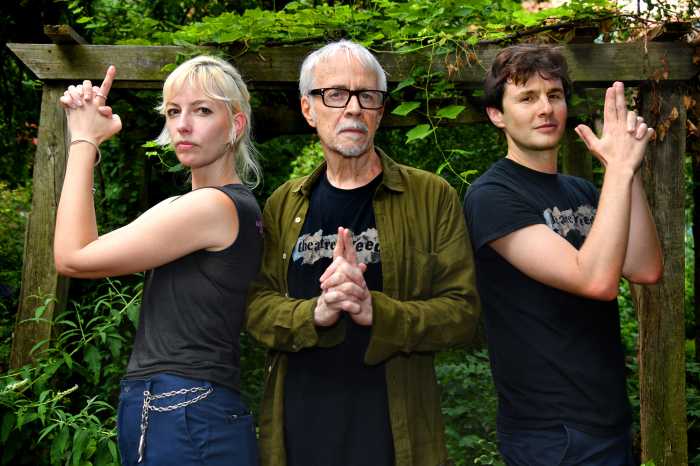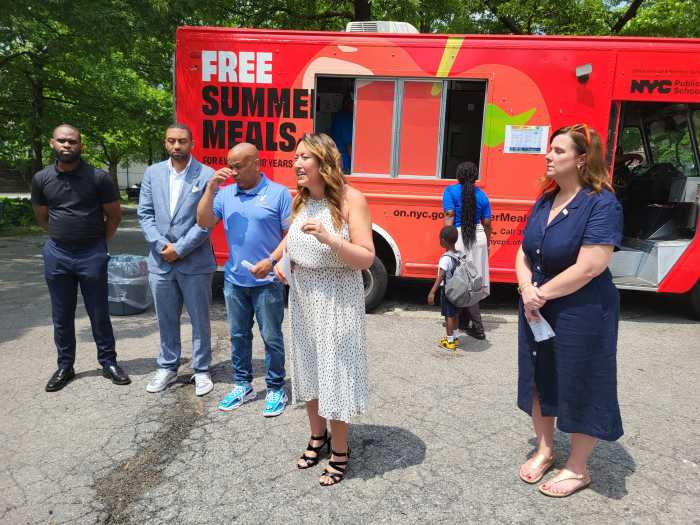By Ed Gold
A Bill Safire column in the Times memorializing the famous publicist and radio-TV talk show pioneer, Tex McCrary, brought back memories of a “lost Saturday” almost 50 years ago that I spent with Tex and his wife, Jinx Falkenberg, the actress-model who graced more than 200 magazine covers in her career.
The Safire piece reminded me of other celebrity connections, some painful, some light-hearted, some poignant.
But back to the “lost Saturday” with Tex and Jinx. The three of us rode in Tex’s car to New Haven for a promotional event at a Yale-Columbia football game. Tex wore his Yale sweater. I represented Columbia, being sports editor at the time of the Columbia newspaper, Spectator.
As it turned out, the event was literally washed out by a torrential rain. Sitting on the 50-yard line, the three of us got thoroughly drenched and a cranky Tex decided to leave at halftime. On the highway going south, Tex reminded Jinx that they had a formal affair at the Waldorf that night. Then he suddenly pulled over to the side of the road and ordered me to get out of the car.
For a panicky moment I thought he was going to leave me there. But Jinx emerged from the front seat, went to the trunk, came back carrying a towel and a small carrying case. She got into the back seat and opened what turned out to be an elaborate makeup kit. Tex told me to take her seat next to him while she made herself even more glamorous.
They dropped me off at a D train subway in the Bronx, and a friendlier Tex said he was sorry about the rain.
As a fledgling reporter in Gallup, N.M., I saw many actors pass through our area. Hollywood was drawn by the extraordinary and colorful rock formations, the wide-open spaces and the presence of the largest Indian tribe in the nation.
Kirk Douglas came to town to play a cynical reporter down on his luck who was trying to get back to a big city paper. The opportunity for a big story arose when a miner gets trapped in a cave-in and Douglas does everything to delay the rescue so he can milk the accident. It was eventually called the “Big Carnival” and turned out to be a big lemon at the box office.
On the set a warm and friendly Douglas, in his physical prime, was interviewed by the writer who looked more like an underfed derelict than a journalist.
The studio’s publicity man had a brainchild. He sent a picture of Douglas and me to all the papers in the state captioned: “Real newspaperman interviews fake newspaperman.”
I got my 15 minutes of fame. The state’s most important paper, the Santa Fe New Mexican, ran the picture on its front page. The state’s attorney general, whom I knew, sent a note saying: “You should get a haircut and eat a decent meal.”
When Alan Ladd came to the Southwest to appear in a post-Civil War Western I noticed that Arthur Kennedy was playing second lead and the heavy to Ladd’s hero. I asked the studio if I could interview Kennedy, who was impressive on Broadway in “Death of a Salesman.” I was advised that protocol required I do Ladd first. So Ladd and I rode out to a dusty Arizona set during which time he told me he wanted to act in a comedy. It turned out that Ladd had a bad head cold and spent much of the day sneezing while his double on horseback did a series of stunts.
The lede on my story the next day read something along these lines: “Alan Ladd is really very human. He gets colds like everyone else and spends a lot of time sneezing.” The P.R. people were furious. It was not what they had in mind. And by the way, forget about interviewing Kennedy!
* * *
On a vacation trip to Bermuda I was asked by the man sitting next to me on the plane whether I knew who he was. No, I said, but you look familiar. He told me he was Ernie Kovacs and was in movies and TV. I learned later of course that he pioneered in outrageously creative effects on TV. We wound up at the same hotel, he with his mother and two daughters and me with another reporter from Fairchild Publications.
Kovacs at the time was in the middle of a messy divorce and a torrid romance, and wanted very much to stay away from predatory females, some of whom were conspicuous. We became friendly and one night Kovacs, my colleague and I went to a nightclub. He had to leave early and tossed a wad of bills on the table. I considered we had gone Dutch and returned most of his money to him the next day, which surprised and pleased him.
For a week he regaled us with tales of risky adventures. I saw him once more when he sent tickets for one of his TV shows. He married Edie Adams and was living in California when he had a fatal car accident. He was 42 years old.
* * *
Hundreds of Reform Democrats, violating all the fire laws, had gathered at the old Limelight Restaurant on Seventh Ave. near Barrow. V.I.D. had rented the place for primary night, Sept. 9, 1961. The kitchen had been converted into a pressroom filled by scores of reporters from the wire services and major newspapers as we challenged the famous Tammany leader, Carmine DeSapio, for party control in Greenwich Village.
I was reading election results from a platform in the rear of the restaurant and it was clear soon after the polls had closed that Reform had swept the Village. There was an unexpected loud roar from the center of the gathering. I looked down from the platform and there was Adlai Stevenson, transfixed by the crowd’s size and excitement. I ran into the crowd, grabbed his arm and told him to follow me. When we got to the platform he raised the hands of our newly elected district leaders, Jim Lanigan and Carol Greitzer, then took the microphone. After offering congratulations, he smiled and, meaning his remarks to be taken as a compliment, he asked: “Where were you people when I needed you in 1952 and 1956?” What followed was the loudest cheer of the night.
I first met Eleanor Roosevelt at her home where a group of Reformers sought her advice on backing a mayoralty candidate in 1961. In the Village, we were up against the DeSapio organization and desperate for campaign money. We decided on a fundraiser at the home of our district leader candidate, Jim Lanigan, then living on Washington Sq. Park W. We needed a draw and Mrs. Roosevelt, though not in the best of health, agreed to come.
The day turned out to be a real scorcher and we had no air conditioning, but Mrs. Roosevelt sat through it all, with charm and dignity. I took my wife over to the great lady and made introductions. Mrs. Roosevelt extended her hand, smiled, and thanked my wife for coming. Whenever we had a spat I would remind my wife about the Roosevelt introduction and it always worked.
When we won the election, Mrs. Roosevelt wrote in a letter to me: “All of us who worked for victory in the primary are delighted with the results of our labor.” She passed away the following year.
Running for the Senate, Bobby Kennedy had met, somewhat reluctantly, with a few Reform Democrats. He was uncomfortable at the meeting, his handshake moist and weak. We asked him to back a Reform Democrat against the old-liner Rep. Charles Buckley and he unhesitatingly said No. He was particularly upset with Reformers because the then-chairperson of the citywide Reform Democratic movement had called him a “carpetbagger.”
He of course was elected and his demeanor had changed as he tried to strengthen the state party organization. I was now chairperson of the city Reform Democratic movement and was invited by Kennedy, along with all the party leadership, to meet with him in Albany. At the time Republicans held the governorship (Rockefeller), the other Senate seat (Javits) and the city mayoralty (Lindsay — who later turned Democrat.)
Many of the party leaders blamed our weakened position on the New York Times, which they claimed, was biased in favor of Republicans.
I suggested that the problem was more likely caused by the fact that our candidates were unattractive and our party message did not generate public enthusiasm.
A Kennedy aide ran over and asked for my home address. A week later I received an autographed copy of Kennedy’s book, “To Seek a New World.” Our future, he had written, “is the work of our own hands, matched to reason and principle, that will decide destiny.”
That’s still true as we face next year’s presidential election.




































